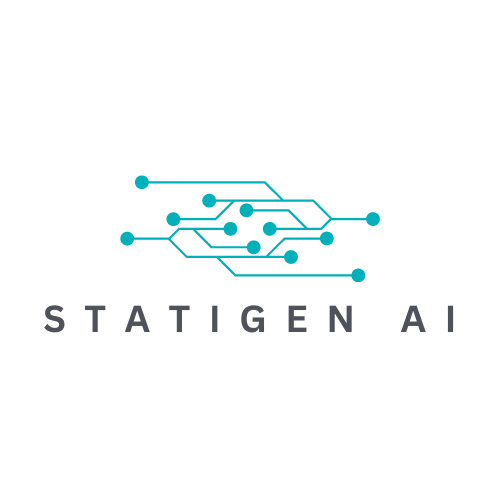OCR and IDP: Leveraging Generative AI
Optical Character Recognition (OCR) and Intelligent Document Processing (IDP) are more than just tools for scanning documents; they have become integral parts of automating business processes and managing data efficiently. In this blog, we'll explore how OCR and IDP are revolutionizing various industries and how Statigen utilizes cutting-edge AI and ML technologies to provide advanced solutions.
The Evolution of OCR
From basic pattern matching to a versatile tool, OCR has evolved significantly thanks to machine learning algorithms like convolutional neural networks (CNNs) and recurrent neural networks (RNNs). These advancements have enabled OCR to handle complex tasks such as handwriting recognition and multi-language support, making it essential in today's data-driven world.
OCR's utility extends far beyond initial text-to-digital conversions, impacting various sectors. In business processes, it aids in real-time data capture and predictive maintenance. In healthcare, it digitalizes handwritten records for easier data analytics. It also streamlines logistics with automated barcode reading, and enhances financial workflows by converting paper-based checks and contracts to digital formats.
As OCR technologies have matured, there has been a parallel evolution in the field of Intelligent Document Processing (IDP).
Introducing Intelligent Document Processing (IDP)
IDP goes beyond simple text extraction to understand the context, classify the document, and even make sense of unstructured data. It often leverages OCR as one of its components but combines it with other technologies like Natural Language Processing (NLP), Machine Learning (ML), and rule-based algorithms to offer a more comprehensive solution.
Mechanics and Challenges of OCR
The backbone of any OCR-IDP system is a well-defined workflow that starts with image capture and concludes with text extraction. Images are initially preprocessed to enhance quality, a step that often involves noise reduction and normalization. Following preprocessing, machine learning algorithms like Convolutional Neural Networks (CNNs) are applied for feature extraction, while Recurrent Neural Networks (RNNs) handle sequence modeling to transform the image into text.
However, the OCR-IDP journey isn't without its challenges. While the technology has made leaps in accuracy, it still grapples with issues like recognizing cursive handwriting or interpreting text from poor-quality images and inconsistent lighting conditions.
To tackle these challenges, Statigen has leveraged a range of OCR tools and techniques tailored to specific project requirements. For instance, we've used Tesseract with Python to successfully extract content from healthcare data in pdfs and images. In more complex scenarios requiring real-time image reading, our teams have employed YOLO v3. To improve model accuracy in these real-time scenarios, we've enhanced YOLO v3 using synthetic data generated through Generative Adversarial Networks (GANs). This innovative approach has proven particularly effective in situations where the availability of real-world data is limited.
IDP goes beyond simple text extraction to understand the context, classify the document, and even make sense of unstructured data. It often leverages OCR as one of its components but combines it with other technologies like Natural Language Processing (NLP), Machine Learning (ML), and rule-based algorithms to offer a more comprehensive solution.
The Role of Cloud Platforms in Democratizing OCR-IDP
Cloud platforms like Amazon Web Services (AWS) and Google Cloud Platform (GCP) have become significant players in the OCR-IDP landscape. With out-of-the-box services like AWS Textract and Google Cloud Vision OCR, these platforms have democratized access to OCR capabilities, making it easier for businesses to integrate OCR into their workflows without requiring deep machine learning expertise.
OCR/IDP often integrates into broader data pipelines. After text extraction, services like Amazon Comprehend may be used for natural language processing. Data is then stored in databases like AWS RDS or Google Cloud SQL, followed by visualization with tools like AWS QuickSight. Additional analysis can be done using machine learning services like AWS SageMaker. This workflow enables not just digitization but also actionable analytics.
Cloud services simplify OCR and IDP, but specialized solutions offer unique advantages. Custom OCR-IDP systems may be more cost-effective for high-volume processing and better suited for firms with specific needs or existing machine learning workflows. In such cases, expertise in advanced AI and ML techniques for OCR-IDP becomes invaluable, and this is where Statigen's interdisciplinary experience shines
Conclusion
OCR and IDP technologies have vast untapped potential that can significantly impact how businesses operate. Their capabilities extend far beyond basic text recognition, thanks to advancements in machine learning. Statigen's solutions harness these advancements in both OCR and IDP, offering businesses powerful tools for automating processes, improving efficiency, and gaining a competitive edge.
If you're looking to integrate advanced OCR/IDP solutions into your business operations, look no further. Explore Statigen's wide range of OCR/IDP services designed to meet your specific needs.


